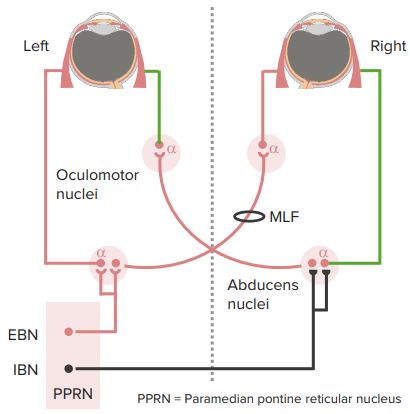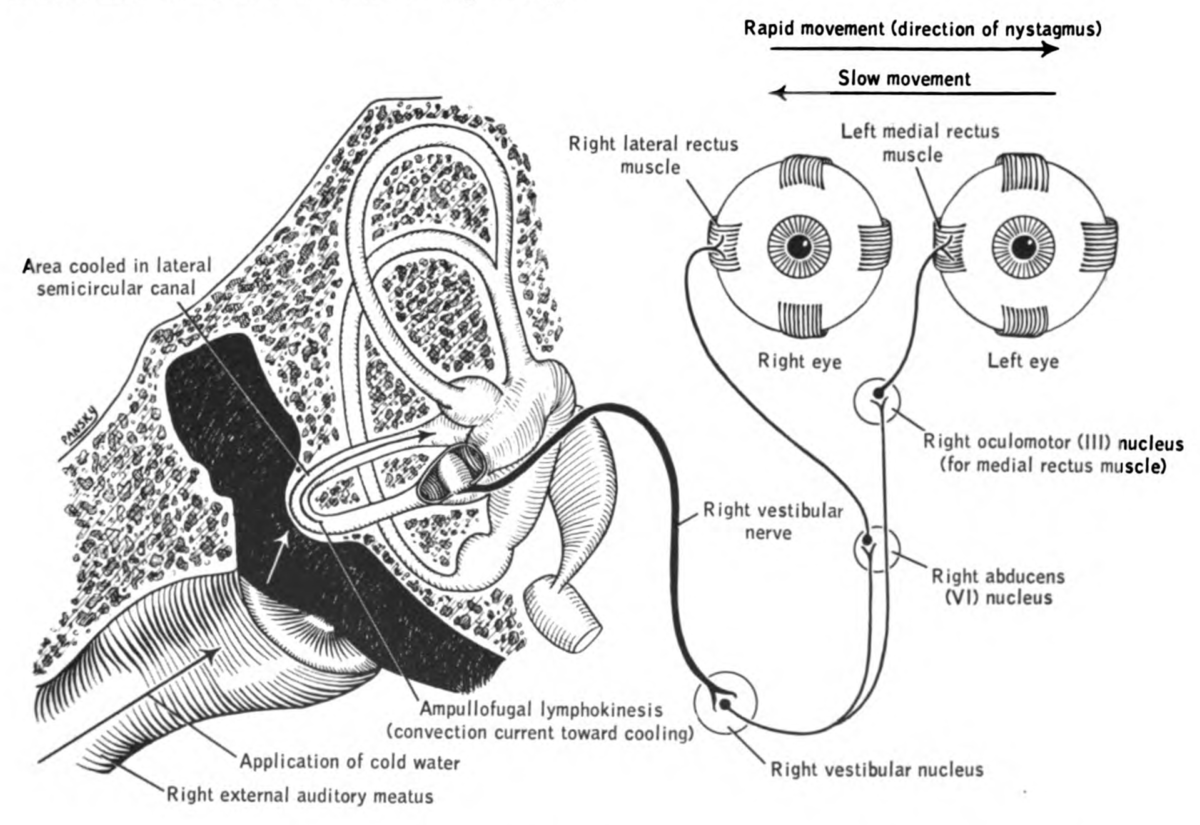Bithermal Caloric Test Stimulates Which of the Following
Based on the above information the patient most likely has A dynamically uncompensated peripheral pathology affecting the right ear Videonystagmography results normally provide site-of-lesion specific information ie caloric irrigations to determine. This test stimulates your acoustic nerve by delivering cold or warm water or air into your ear canal.

Caloric Reflex Test And Horizontal Gaze Nystagmus Test Lecturio
The test is done in the following way.

. The bithermal caloric test is the most commonly used test in the ENG battery. Bilateral bithermal caloric results indicate a 50 percent right weakness with no significant directional preponderance. The caloric test is designed to stimulate which of the following structures.
Traditionally the caloric test is performed with the patient lying with the head elevated 30. When cold water or air enters your ear and the inner ear changes temperature it should cause fast side-to-side eye movements called nystagmus. The vestibular-ocular reflex requires an intact brain stem to function and its purpose is to maintain eye fixation on a stationary target.
During the test thermal stimuli in the form of 30o and 44 o C water are applied serially to the horizontal semicircular canal and the nystagmus generated are measured and. When cold water or air enters your ear and the inner ear changes temperature it should cause fast side-to-side eye movements called nystagmus. This test stimulates your acoustic nerve by delivering cold or warm water or air into your ear canal.
Caloric stimulation usually follows these steps. Caloric stimulation is a test that uses differences in temperature to diagnose damage to the acoustic nerve. 1 2 The brainstem vestibulo-ocular reflex VOR causes tonic eye deviation opposite to that of the head turn to maintain fixation on an object.
When cold water or air enters your ear and the inner ear changes temperature it should cause fast side-to-side eye movements called nystagmus. Before the test your ear especially the eardrum will be checked. The test is done in the following way.
This method was developed by Robert Bárány who won a Nobel prize in 1914 for this discovery. How the Test is Performed. This test stimulates your acoustic nerve by delivering cold or warm water or air into your ear canal.
Before the test your ear especially the eardrum will be checked. Caloric testing is a useful clinical tool that can assess and quantify the functional status of the individual vestibular systems. When cold water or air enters your ear and the inner ear changes temperature it should cause fast side-to-side eye movements called nystagmus.
No positioning or positional nystagmus is observed. It was determined that the duration of nystagmus in both water and air stimulated bithermal-caloric tests were identical when the temperature of cold air wave was 26 degrees. 3 However this action is counteracted by the saccades from the frontal eye field in a reverse direction to.
How the Test is Performed. The eardrum is checked. This is the nerve that is involved in hearing and balance.
Before the test the eardrum is checked to make sure it is healthy and. With the probe in the. How the Test is Performed.
When cold water or air enters your ear and the inner ear changes temperature it should cause fast side-to-side eye movements called nystagmus. Bilateral bithermal caloric results indicate a 50 percent right weakness with no significant directional preponderance. The altemate binaural bithermal caloric test elicited a 56 reduced vestibular response RVR on the left and the simultaneous binaural bithermal test yielded a type 2 response and an RVR left.
Dizziness hyperactive caloric responses otic capsule demineralization impaired glucose tolerance and hyperinsulinemia. The test also checks for damage to the brain stem. The bithermal caloric test first described by Robert Barany assesses lateral vestibular canal function.
The purpose of this course is to provide an in-depth discussion of the caloric testing portion of the VNGENG test battery. An audiometric test produces the following results. The test utilizes the mechanics of the vestibular-ocular reflex to test for a unilateral peripheral deficit.
Content will include descriptions of testing procedures analysis and interpretation of results. This test stimulates your acoustic nerve by delivering cold or warm water or air into your ear canal. Cold 30C and warm 44C water are used to irrigate one ear at a time.
The water stimulates the nerves of the inner ear. In medicine the caloric reflex test sometimes termed vestibular caloric stimulation is a test of the vestibulo-ocular reflex that involves irrigating cold or warm water or air into the external auditory canal. In this study I tried to establish parameters of stimuli obtained in the Air Stimulated Bithermal-Calorics test that evoked nystagmus similar to those obtained in the Fitzgerald-Hallpike water stimulated test.
This test stimulates your acoustic nerve by delivering cold or warm water or air into your ear canal.

Caloric Reflex Test And Horizontal Gaze Nystagmus Test Lecturio

Comments
Post a Comment